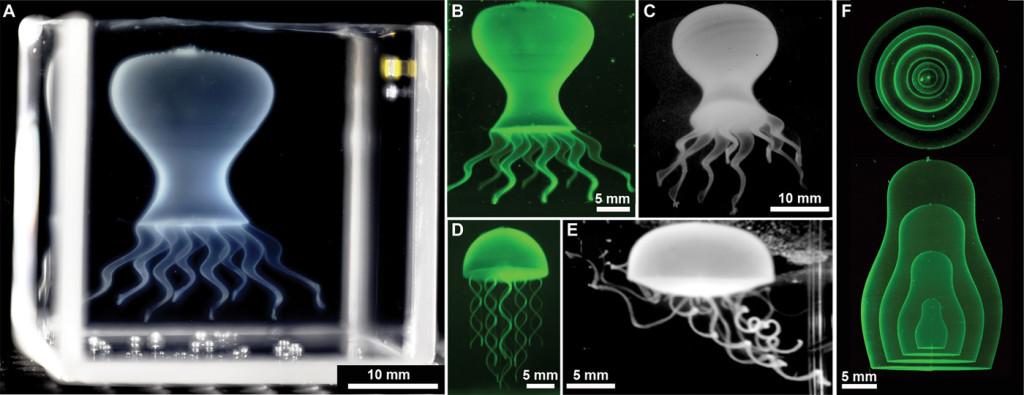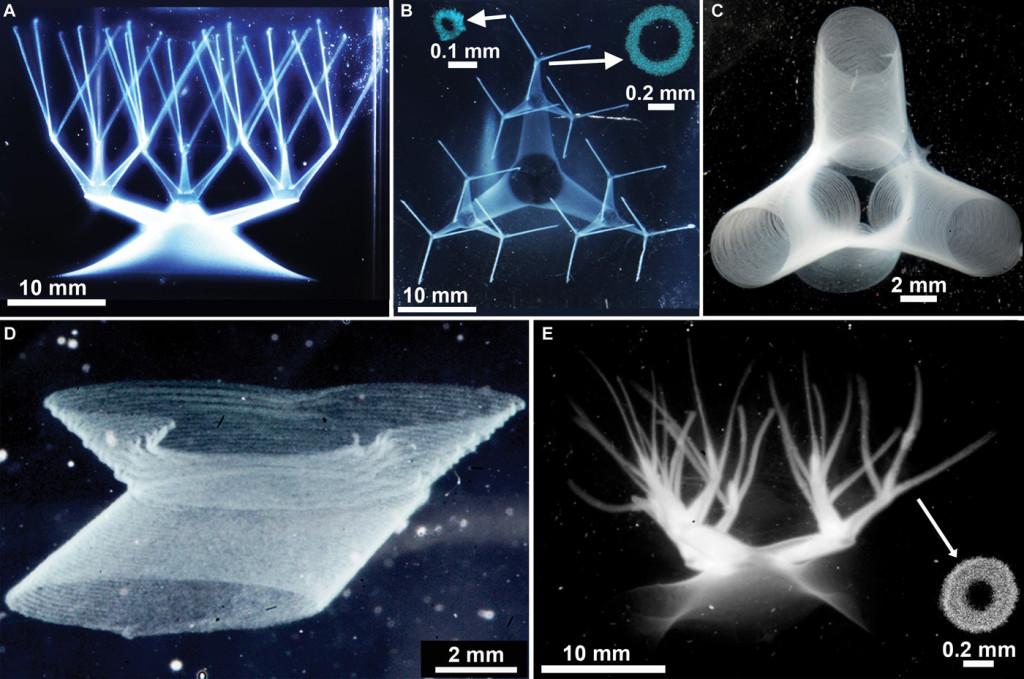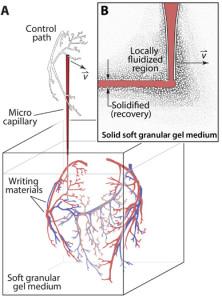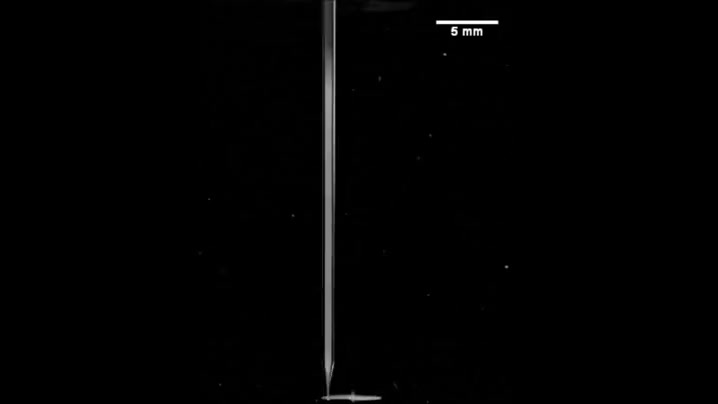 Bioprinting is widely considered to be an integral part of the future of medical science. We have taken some incredible strides forward in developing applicable bioprinting technologies, but we are still in the very early stages of creating real, usable bioprinted material. While researchers are currently testing the viability of bioprinted objects like human ears, soft structures that have little to no internal support are still difficult if not impossible to print. Specifically small cellular structures like organs and human venous systems tend to collapse under their own weight before they can become viable.
Bioprinting is widely considered to be an integral part of the future of medical science. We have taken some incredible strides forward in developing applicable bioprinting technologies, but we are still in the very early stages of creating real, usable bioprinted material. While researchers are currently testing the viability of bioprinted objects like human ears, soft structures that have little to no internal support are still difficult if not impossible to print. Specifically small cellular structures like organs and human venous systems tend to collapse under their own weight before they can become viable.
However, a team of researchers from the University of Florida have developed a process that allows previously impossible structures to be 3D printed out of soft materials like human cells or even flexible electronic circuits. The process works by injecting inks loaded with the 3D printing material into a special gel that will hold them in place and prevent them from collapsing in on themselves. This technique could eventually be harnessed to build complex, 3D printed organs from some of a patient’s own cells. And while printing new, viable organs is still a ways off, the process could be useful sooner as a way to create incredibly lifelike surrogate organs for medical training or drug research.
What makes this new 3D printing process possible is a commercially available granular hydrogel called Carbopol EDT 2020. The Carbopol gel is made of particles that are only 7 micrometers wide, which allows it to act as both a liquid and a solid depending on the shear stress that is applied to it. The unique properties of the gel also allow the extruder from the tiny printer to penetrate the gel and deposit the printing medium without disrupting the rest of the structure being printed. The gel holds the printing inks firmly in place so virtually any complex object can be drawn into it. The research team has used the gel to 3D print complex shapes like a tube tied in a knot, a set of tiny Russian nesting dolls and even detailed models of jellyfish.
 Here is a video of some of the complex shapes being printed and suspended in the gel material:
Here is a video of some of the complex shapes being printed and suspended in the gel material:
“The granular gel medium yields, fluidises, flows and self-heals locally and rapidly around the moving printing needle. When the inks are printed into the gel, they are trapped. 3D printing is no longer a game of specially made solidifying materials or optimally matched support materials,” explained University of Florida researcher Thomas Angelini to Chemistry World.
 While conducting their research, Angelini and his team have printed shapes and objects using seven different types of materials, including living cells. Human aortic cells were used to print twisting and curving networks of interconnected veins that maintained their shape for the duration of the test. The jellyfish replicas were printed from a silicone material that replicated the soft anatomy of the creature almost exactly. Researchers even believe that flexible electronic components could be 3D printed using their process, allowing patient-specific microscopic machines that can be implanted into the human body to be made.
While conducting their research, Angelini and his team have printed shapes and objects using seven different types of materials, including living cells. Human aortic cells were used to print twisting and curving networks of interconnected veins that maintained their shape for the duration of the test. The jellyfish replicas were printed from a silicone material that replicated the soft anatomy of the creature almost exactly. Researchers even believe that flexible electronic components could be 3D printed using their process, allowing patient-specific microscopic machines that can be implanted into the human body to be made.
 The 3D printer used to print these microscopic shapes has a resolution as fine as one micron, so virtually any structure in the human body could potentially be replicated, even human capillaries so thin only a single cell can move through them at a time. The gel itself is also quite adaptable and will work with a wide variety of printing materials and mediums. Photosensitive inks that can be used to build microscopic electronics can be solidified inside of the gel material without the inks being diluted or the gel medium shifting, while softer materials like living human cells can stay submerged in the gel indefinitely. The gel acts as a support system that will allow the human cells to bond together and begin holding their shape without the need of support.
The 3D printer used to print these microscopic shapes has a resolution as fine as one micron, so virtually any structure in the human body could potentially be replicated, even human capillaries so thin only a single cell can move through them at a time. The gel itself is also quite adaptable and will work with a wide variety of printing materials and mediums. Photosensitive inks that can be used to build microscopic electronics can be solidified inside of the gel material without the inks being diluted or the gel medium shifting, while softer materials like living human cells can stay submerged in the gel indefinitely. The gel acts as a support system that will allow the human cells to bond together and begin holding their shape without the need of support.
While this is not the first 3D bioprinting process that has experimented with using a suspended liquid to act as printing support, it is the use of this specific gel medium that makes it novel. However there are still hurdles to be overcome; so far the printing process is still rather slow, so larger structures will take far too long to print, possibly too long for any living tissue to remain viable. Additionally, it can often be difficult to remove the bioprinted matter from the gel. But Angelini and his team are currently working to develop new granular hydrogels that allow for bioprinted matter to be separated from it quicker while reducing the risk of damaging the construct.
Discuss this story in the 3D Printing with Microscopic Construct forum thread on 3DPB.com.
Subscribe to Our Email Newsletter
Stay up-to-date on all the latest news from the 3D printing industry and receive information and offers from third party vendors.
Print Services
Upload your 3D Models and get them printed quickly and efficiently.
You May Also Like
U.S. Navy Lab Uses 3D Printing to Reduce Tooling Lead Time By Over 90%
The F-35 Lightning II Joint Program Office (JPO), responsible for life-cycle management of the key fifth-generation joint strike fighter (JSF) system used by the U.S., its allies, and its partners,...
Etsy Design Rule Change Reduces Selection of 3D Printed Goods
Online marketplace Etsy has implemented a rule change requiring all 3D printed goods on the site to be original designs. The update to the site’s Creativity Standards states, ¨Items produced using...
Honeywell Qualifies 6K Additive’s Nickel 718 for 3D Printed Aerospace & Defense Parts
6K Additive is renowned for manufacturing sustainable additive manufacturing (AM) powder, and offers a wide portfolio of premium metal and alloy powders that include titanium, copper, stainless steel, and nickel,...
MetalWorm Sells WAAM Systems to Research Institutes in Brazil and Malaysia
Turkish WAAM firm MetalWorm has sold a system in Malaysia and another in Brazil. This is an excellent example of a few emerging trends in additive. Firstly, WAAM was experimented...


































